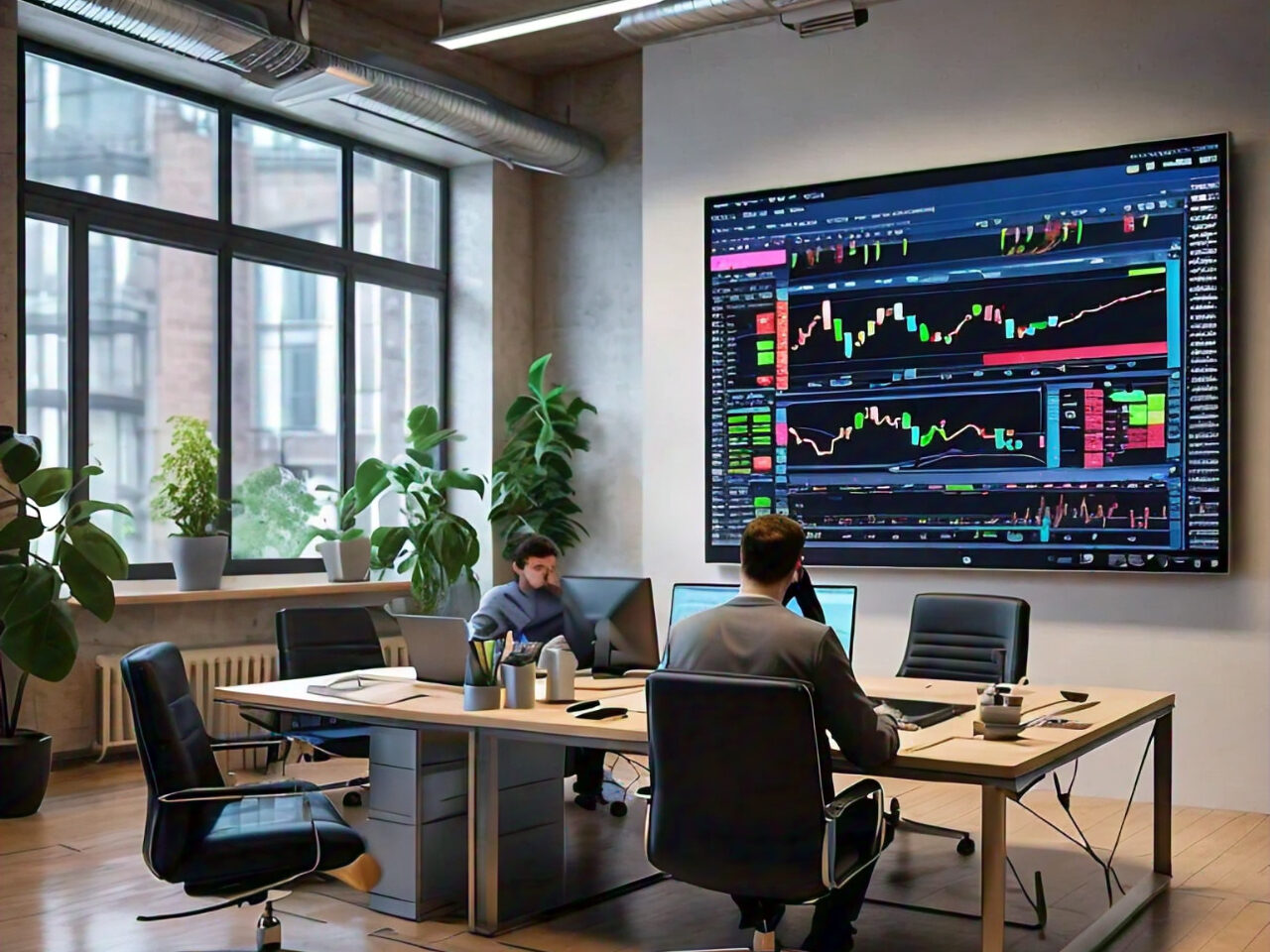
As a cryptocurrency trader, selecting the right exchange is crucial for success in the volatile crypto market. With numerous exchanges available, each offering unique features and benefits, choosing the best platform can be overwhelming. In this article, we will delve into the key features of the latest crypto exchanges, providing you with the necessary information to make an informed decision.
The Evolution of Crypto Exchanges
The cryptocurrency exchange landscape has undergone significant transformations since the launch of the first exchange, Mt. Gox, in 2010. Initially, exchanges focused on basic trading functionality, but as the market grew, so did the need for advanced features and security measures. Today’s crypto exchanges offer a wide range of features, including margin trading, advanced charting tools, and robust security protocols.
Why Choosing the Right Exchange Matters
Selecting the right crypto exchange can significantly impact your trading experience and success. A suitable exchange should offer the necessary tools and features to facilitate efficient trading, ensure the security of your assets, and provide a user-friendly interface. With the rise of decentralized exchanges (DEXs) and hybrid models, traders have more options than ever before.
Key Features to Consider
When evaluating crypto exchanges, there are several key features to consider. These include:
- Advanced trading tools and features
- Robust security measures
- Fees and charges
- Asset variety and liquidity
- User experience and mobile optimization
- Regulatory compliance
In the following sections, we will explore each of these features in-depth, providing you with a comprehensive understanding of what to look for in a crypto exchange.
Advanced Trading Tools and Features
1. Margin Trading
Margin trading allows traders to leverage their positions, amplifying potential gains and losses. Top exchanges offer margin trading with varying leverage ratios, interest rates, and asset availability.
2. Stop-Loss Orders
Stop-loss orders enable traders to set a price level at which their position will be automatically closed, limiting potential losses. Exchanges offer different types of stop-loss orders, including fixed price, trailing stop, and percentage-based stops.
3. Charting Tools and Technical Indicators
Advanced charting tools and technical indicators help traders analyze markets and make informed decisions. Popular exchanges offer:
- Real-time market data and charts
- Customizable charting tools
- Technical indicators (e.g., RSI, Bollinger Bands, Moving Averages)
- Drawing tools (e.g., trend lines, support/resistance levels)
4. Automated Trading and Bots
Automated trading and bots enable traders to execute strategies without manual intervention. Exchanges offer:
- API access for custom bot development
- Pre-built trading bots
- Backtesting and simulation tools
5. Advanced Order Types
Advanced order types provide traders with more control over their positions. Exchanges offer:
- Limit orders
- Market orders
- Stop-loss orders
- Take-profit orders
- Conditional orders (e.g., OCO, OSO)
6. Futures and Options Trading
Futures and options trading allow traders to speculate on asset prices or hedge against potential losses. Top exchanges offer:
- Perpetual swaps
- Futures contracts
- Options contracts
When evaluating an exchange’s trading tools and features, consider your individual needs and trading style. Do you require advanced charting tools or margin trading capabilities? Are you interested in automated trading or futures trading? Understanding your needs will help you choose the best exchange for your trading goals.
Robust Security Measures
1. Multi-Factor Authentication (MFA)
MFA adds an extra layer of security to user accounts, requiring a second form of verification beyond just a password. Top exchanges offer:
- SMS-based 2FA
- Authenticator app-based 2FA (e.g., Google Authenticator)
- U2F-based 2FA (e.g., YubiKey)
- Biometric-based 2FA (e.g., fingerprint, face recognition)
2. Cold Storage and Custody Solutions
Cold storage and custody solutions protect assets from online threats by storing them offline. Exchanges offer:
- Cold storage wallets
- Multi-signature wallets
- Institutional-grade custody solutions
- Insurance coverage for assets
3. Encryption and Data Protection
Encryption and data protection measures safeguard user data and assets. Exchanges implement:
- SSL/TLS encryption
- End-to-end encryption
- Regular security audits and penetration testing
- Compliance with data protection regulations (e.g., GDPR, CCPA)
4. KYC/AML and Compliance
Know-Your-Customer (KYC) and Anti-Money Laundering (AML) measures ensure exchanges comply with regulatory requirements. Exchanges implement:
- KYC verification processes
- AML monitoring and reporting
- Compliance with international regulations (e.g., FATF, FinCEN)
5. Insurance and Asset Protection
Insurance and asset protection measures provide users with an added layer of security. Exchanges offer:
- Asset insurance
- Deposit insurance
- Protection against phishing and social engineering attacks
When evaluating an exchange’s security measures, consider the following:
- What types of MFA are available?
- How are assets stored and protected?
- What encryption and data protection measures are in place?
- Is the exchange compliant with regulatory requirements?
- What insurance and asset protection options are available?
Fees and Charges

1. Trading Fees
Trading fees are charged on each trade, typically as a percentage of the trade value. Exchanges offer:
- Maker-taker fee models
- Flat fee models
- Tiered fee structures based on trading volume
- Discounts for loyal customers or large traders
2. Deposit and Withdrawal Fees
Deposit and withdrawal fees are charged when moving assets in or out of the exchange. Exchanges offer:
- Free deposits for certain payment methods
- Competitive withdrawal fees
- Minimum withdrawal limits
- Support for multiple payment methods (e.g., bank transfers, credit cards, cryptocurrencies)
3. Other Charges
Other charges may apply, including:
- Inactivity fees
- Account maintenance fees
- Margin trading fees
- Fees for advanced features or services (e.g., API access, data feeds)
4. Fee Discounts and Promotions
Exchanges offer fee discounts and promotions to attract and retain users, including:
- Welcome bonuses
- Referral programs
- Loyalty programs
- Limited-time fee discounts or waivers
5. Transparency and Disclosure
Exchanges should clearly disclose their fee structures and any changes, ensuring transparency and trust. Look for:
- Easily accessible fee schedules
- Regular updates on fee changes
- Clear explanations of fee calculations
When evaluating an exchange’s fees and charges, consider the following:
- What are the trading fees, and how do they compare to other exchanges?
- Are deposit and withdrawal fees competitive?
- Are there any additional charges or fees?
- Are fee discounts or promotions available?
- Is the exchange transparent about their fee structure?
Widespread Asset Variety and Liquidity
1. Supported Cryptocurrencies
Exchanges offer varying numbers of supported cryptocurrencies, including:
- Major cryptocurrencies (e.g., Bitcoin, Ethereum, Litecoin)
- Altcoins and alternative assets
- Tokens and stablecoins
- Newly listed and emerging assets
2. Trading Pairs and Markets
Exchanges provide diverse trading pairs and markets, including:
- Fiat-crypto pairs (e.g., USD-BTC)
- Crypto-crypto pairs (e.g., ETH-BTC)
- Derivatives and futures markets
- Margin trading and leverage options
3. Liquidity and Order Book Depth
Liquidity and order book depth ensure traders can execute trades quickly and at fair prices. Look for:
- High trading volumes and liquidity
- Deep order books with tight bid-ask spreads
- Minimal slippage and price impact
4. Asset Listing and Delisting
Exchanges have processes for listing and delisting assets, ensuring:
- Newly listed assets meet quality and security standards
- Delisted assets are removed due to legitimate reasons (e.g., security concerns, low liquidity)
5. Partnerships and Collaborations
Exchanges partner with other companies and organizations to expand offerings and improve services, including:
- Partnerships with blockchain projects and developers
- Collaborations with financial institutions and payment providers
- Memberships in industry associations and advocacy groups
When evaluating an exchange’s asset variety and liquidity, consider the following:
- Does the exchange support a wide range of cryptocurrencies and trading pairs?
- Are liquidity and order book depth sufficient for your trading needs?
- What is the process for listing and delisting assets?
- Are partnerships and collaborations beneficial to users?
User Experience and Mobile Optimization
1. Intuitive Interface and Navigation
Exchanges should offer an intuitive interface and navigation, making it easy for users to:
- Find trading pairs and markets
- Execute trades and manage orders
- Monitor account balances and activity
- Access advanced features and settings
2. Mobile App and Optimization
Mobile apps and optimization ensure seamless trading experiences on-the-go, including:
- Native mobile apps for iOS and Android
- Responsive web design for mobile browsers
- Push notifications and alerts
- Biometric login and security features
3. Customization and Personalization
Exchanges should allow users to customize and personalize their experience, including:
- Customizable dashboard and layout
- Personalized trading views and settings
- Notification preferences and alerts
- Language and timezone options
4. Education and Support
Exchanges should provide comprehensive education and support resources, including:
- Trading guides and tutorials
- FAQ sections and knowledge bases
- Live chat and email support
- Community forums and social media channels
5. Accessibility and Inclusivity
Exchanges should prioritize accessibility and inclusivity, ensuring:
- Compliance with web accessibility standards
- Support for multiple languages and currencies
- Inclusive and diverse community engagement
- Accessibility features for users with disabilities
When evaluating an exchange’s user experience and mobile optimization, consider the following:
- Is the interface intuitive and easy to navigate?
- Are mobile apps and optimization sufficient for on-the-go trading?
- Can users customize and personalize their experience?
- Are education and support resources comprehensive and accessible?
- Does the exchange prioritize accessibility and inclusivity?
Regulatory Compliance and Security Audits

1. Licensing and Registration
Exchanges should hold necessary licenses and registrations, including:
- Regulatory approvals from reputable authorities (e.g., SEC, FCA, ASIC)
- Compliance with AML/KYC regulations
- Membership in industry associations and advocacy groups
2. Security Audits and Penetration Testing
Exchanges should undergo regular security audits and penetration testing, including:
- Independent security audits and assessments
- Penetration testing and vulnerability assessments
- Compliance with industry security standards (e.g., SOC 2, ISO 27001)
3. Data Protection and Privacy
Exchanges should prioritize data protection and privacy, including:
- Compliance with data protection regulations (e.g., GDPR, CCPA)
- Encryption and secure storage of user data
- Transparent data handling and privacy policies
4. Anti-Money Laundering (AML) and Know-Your-Customer (KYC)
Exchanges should implement robust AML and KYC measures, including:
- Customer identification and verification processes
- Transaction monitoring and reporting
- Compliance with AML/KYC regulations and guidelines
5. Transparency and Disclosure
Exchanges should maintain transparency and disclosure, including:
- Clear and concise terms of service and privacy policies
- Regular security updates and incident reports
- Transparent fee structures and trading rules
When evaluating an exchange’s regulatory compliance and security audits, consider the following:
- Does the exchange hold necessary licenses and registrations?
- Are security audits and penetration testing conducted regularly?
- Is user data protected and privacy prioritized?
- Are AML/KYC measures robust and effective?
- Is the exchange transparent and forthcoming with information?
Conclusion
Selecting the right crypto exchange is a crucial decision for any trader or investor. With numerous options available, it’s essential to consider key factors such as advanced trading tools, robust security measures, fees and charges, asset variety and liquidity, user experience, and regulatory compliance.
By evaluating these factors and considering your individual needs and trading style, you can make an informed decision and choose an exchange that meets your requirements.
Final Tips
- Always research and evaluate an exchange before signing up
- Consider multiple exchanges and compare their features and offerings
- Stay up-to-date with industry developments and regulatory changes
- Prioritize security and compliance when selecting an exchange
- Don’t hesitate to reach out to exchange support teams for assistance
By following these tips and considering the key factors outlined in this article, you can find a reliable and suitable crypto exchange for your trading needs.





